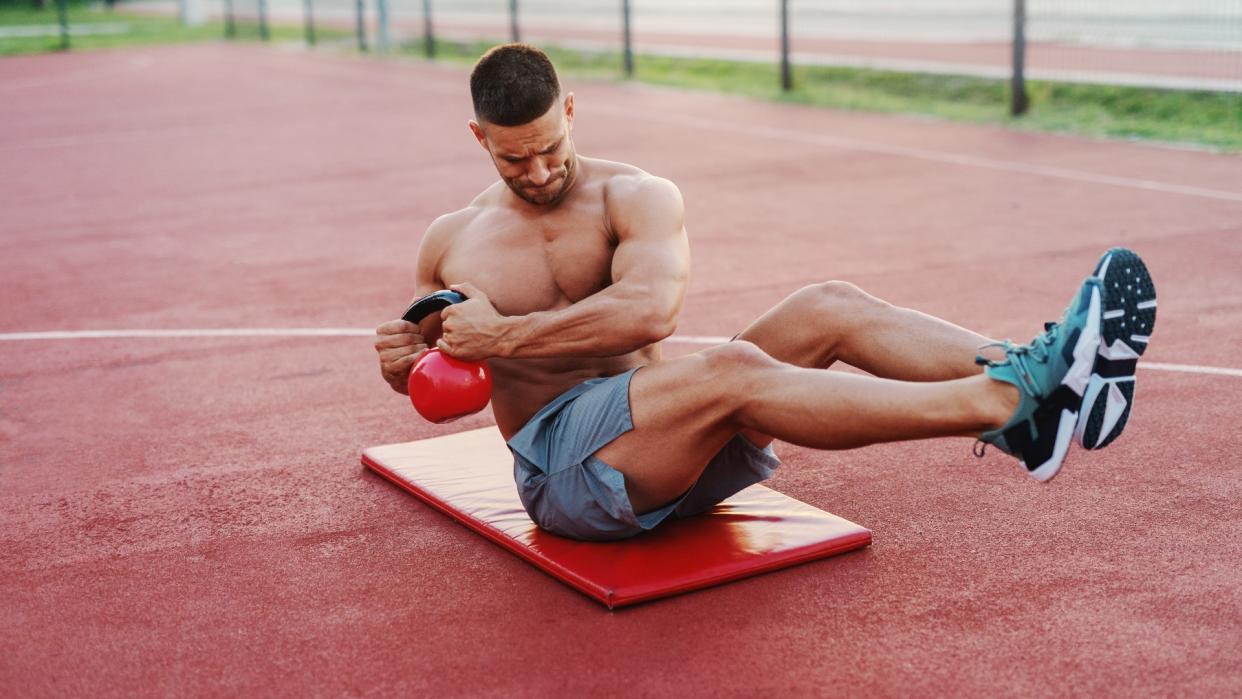Russian twist: how to do it, and the benefits for your core

The Russian twist is a dynamic abdominal exercise that's more than just a twist — it's a core-strengthening powerhouse. In the quest for an ab blasting workout, targeted exercises that engage all areas of your core muscles are your best bet.
Ready to unlock the full potential of the Russian twist? From mastering proper form to exploring advanced variations, we explore the intricacies of this powerful movement. Whether you're a seasoned fitness enthusiast or just beginning your journey to a stronger core, the Russian twist promises to upgrade your ab routines and improve your core strength.
How to do a Russian twist
Remember to keep the movement slow and controlled. Don’t arch your back or lean back too far. It’s also worth noting that Russian twists are one of the abdominal exercises that put a bit of pressure on your lower back, so if you struggle with back pain, it’s worth checking with your doctor before adding these to your regular workout routine.
Sit on an exercise mat (if you don’t have one, we’ve hand-picked the best yoga mats for home workouts)
Engage your core as you lean backward, lifting your legs off the floor if you can, creating a V-shape position. You can cross your legs if it helps
Bring your hands together in front of your chest or hold a weight between both hands with elbows bent
Twist your torso from side to side, drawing your hands toward your hip as you twist
Follow your hands with your eyeline and continue for reps.
What are the common form mistakes?
If you're experiencing pain in your lower back when doing a Russian Twist, the chances are, you're getting your form wrong. Dr Hazel Wallace took to TikTok to explain.
In a video, she shows the incorrect technique, moving from side to side from the lower back and swinging her legs from side to side. She then demonstrates how to do the move correctly, keeping her hips and lower back locked in place, and the rotation comes from the rib cage, not the back.
If the exercise is too difficult with your feet off the floor, lower them to the ground to ensure you're getting your form right before progressing.
What are the benefits of Russian twists?
Russian twists target many core muscles, including the rectus abdominis — which are the abdominal muscles that run down the front of the stomach and are known as the ‘six-pack’ — the transverse abdominis, which are the deepest abdominal muscles, and the obliques, which run along the side of the torso and created a ribbed look along the waist.
The movement involved in a Russian twist forces you to engage your core to stay sitting still, but it also builds stability and targets the muscles in the lower back. These, in turn, can help with your posture.
Far from being just an aesthetic goal, a strong core is important for a lot of sports, including running and weight training.
What are the best Russian twist modifications?
If you’re finding Russian twists too challenging, you can try the same exercise with your feet lowered to the floor. To do this, sit back on your seatbones and lean back so you feel your core engage. Keep your legs out in front of you, with a bend in your knees and your feet against the floor. Engaging your core, rotate from side to side.
Alternatively, if the Russian twist is too much on your lower back or pelvis, you can try a modification where you kneel instead of sitting on the mat. To do this, kneel on your mat and lean your upper body backward until you are at around a 60-degree angle. Engage your core and glutes, and twist your torso from side to side.
If you’re finding Russian twists too easy, why not add some weight to the movement? Perform the same twist, but hold an adjustable dumbbell or kettlebell in your hands and lower the weight to the floor on either side of the body as you twist. You’ll feel the burn in no time.
